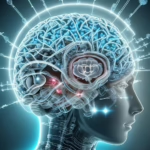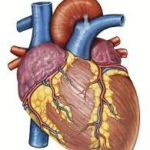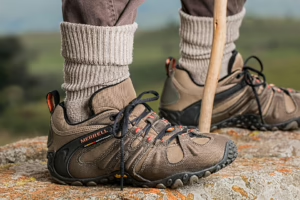Exploring the Connection Between Dehydration and Muscle Spasms
Dehydration is a common physiological condition that can have various adverse effects on the human body. Among these effects, muscle spasms are noteworthy complications. This article delves into the intricate relationship between dehydration and muscle spasms, discussing the underlying mechanisms, symptoms, causes, prevention, and treatment strategies.
Understanding Dehydration
Dehydration occurs when the body loses more fluids than it takes in, leading to an imbalance in the body’s water levels. This imbalance can disrupt several bodily functions, particularly those related to energy production, temperature regulation, and electrolyte balance. Mild to moderate dehydration can result from various factors, including inadequate fluid intake, excessive sweating, ill-timed or overly aggressive exercise, illness, or the consumption of certain medications.
Types of Dehydration
- Hypotonic Dehydration: Occurs when there is a loss of electrolytes, primarily sodium, which disrupts the balance of fluids in the body.
- Isotonic Dehydration: Involves a uniform loss of both water and electrolytes.
- Hypertonic Dehydration: Characterized by the loss of more water than electrolytes, leading to a high concentration of solutes in the blood.
Symptoms of Dehydration
The severity of dehydration symptoms can vary, often including:
- Thirst
- Dry mouth and mucous membranes
- Decreased urine output
- Dark-colored urine
- Fatigue
- Dizziness or lightheadedness
- Muscle cramps or spasms
The Physiology of Muscle Spasms
Muscle spasms are sudden, involuntary contractions of one or more muscles and can be caused by a variety of factors, including dehydration. Understanding muscle physiology and the role of electrolytes is crucial to grasp the connection between dehydration and muscle spasms.
Muscle Structure and Function
Muscles are composed of fibers that contract in response to nerve signals. This contraction involves the interplay of various ions, including sodium, potassium, and calcium. When the body becomes dehydrated, the balance of these electrolytes can be disturbed, leading to increased excitability of muscle fibers and a higher propensity for spasms.
Electrolytes and Their Role
Electrolytes, such as sodium, potassium, calcium, and magnesium, are vital for muscle function. They facilitate nerve impulses and muscle contractions. When dehydration occurs, the loss of these electrolytes can impair muscular function, leading to the following:
- Increased Action Potentials: An imbalance in ion concentrations can result in increased frequency of action potentials, causing muscles to contract involuntarily.
- Impaired Relaxation: Electrolyte imbalances can prevent muscles from relaxing fully after contraction, which may lead to spasms.
The Connection Between Dehydration and Muscle Spasms
Dehydration as a Precipitating Factor
Research has demonstrated that dehydration can significantly heighten the risk of suffering from muscle spasms. A study published in the “Journal of Athletic Training” found that athletes who performed under dehydrated conditions experienced more frequent muscle spasms and cramps than those who remained adequately hydrated[^1]. The underlying mechanisms involve both neuromuscular and metabolic factors:
- Neuromuscular Irritability: Dehydration can lead to altered nerve conduction due to fluctuating electrolyte levels.
- Reduced Blood Flow: Dehydration can result in reduced blood volume, impacting oxygen and nutrient delivery to the muscles, which can increase the likelihood of spasms.
- Metabolic Disturbances: Dehydration can disrupt the metabolic processes that play a role in energy production, leading to muscle fatigue and spasms.
Factors Influencing Dehydration and Spasms
Several factors can influence the degree to which dehydration affects muscle spasms, including:
- Exercise Intensity: High-intensity or prolonged physical activity can lead to significant fluid and electrolyte loss through sweat.
- Environmental Conditions: Hot and humid conditions further increase fluid loss and can exacerbate the chances of muscle spasms.
- Individual Hydration Status: Certain individuals may have a higher propensity for dehydration due to factors such as age, fitness level, and existing health conditions.
Prevention Strategies
Understanding the clear link between dehydration and muscle spasms highlights the importance of effective prevention strategies. These strategies include appropriate hydration practices, understanding the signs of dehydration, and recognizing when to adjust hydration levels during physical activities.
Adequate Fluid Intake
- Daily Water Intake: It is crucial to maintain adequate daily fluid intake. Recommendations typically suggest about 2.7 liters for women and 3.7 liters for men[^2].
- Electrolyte Solutions: In cases of high sweat loss during exercise, consuming sports drinks containing electrolytes can help maintain balance.
Monitoring Hydration Status
- Regularly check urine color, aiming for a light yellow shade to indicate adequate hydration.
- Use weight fluctuations during exercise sessions; losing more than 2-3% of body weight may indicate dehydration.
Gradual Acclimatization
- Gradually increasing the intensity and duration of exercise sessions allows the body to adapt to higher levels of stress and heat, reducing fluid loss over time.
Treatment Options for Muscle Spasms
When muscle spasms do occur, prompt treatment can alleviate discomfort and prevent recurrence. Treatment strategies may include:
Hydration
- Rehydration: Drinking fluids is the first step in managing muscle spasms caused by dehydration. Drinking water is effective, but solutions containing electrolytes may be more beneficial, especially after intense exercise.
Stretching and Massage
- Physical intervention: Stretching the affected muscle gently can relieve spasms. Massage can also enhance blood flow to the region and help in relaxation.
Heat and Cold Therapy
- Application of Heat: Placing a warm towel or heating pad on the affected area can also relax the muscle.
- Cold Packs: In contrast, cold therapy can reduce inflammation and alleviate pain.
Over-the-Counter Medications
Nonsteroidal anti-inflammatory drugs (NSAIDs) such as ibuprofen may help reduce pain associated with muscle spasms.
Conclusion
The connection between dehydration and muscle spasms is significant and multifaceted. As discussed throughout this article, dehydration can serve as a precipitating factor for muscle spasms due to its impact on electrolyte balance and muscle physiology. Understanding the mechanisms behind this relationship allows for better prevention and treatment strategies, particularly in physically active individuals. By maintaining proper hydration and recognizing the symptoms of dehydration promptly, individuals can significantly reduce their risk of experiencing muscle spasms.
Through continued research, we can improve our understanding of hydration’s impact on muscle function and overall athletic performance, paving the way for effective interventions and recommendations in sports science and health care.
[^1]: Miller, K. C., et al. (2009). "Hydration Status and Muscle Cramps." Journal of Athletic Training, 44(2), 92-99.
[^2]: Institute of Medicine (2004). "Dietary Reference Intakes for Water, Potassium, Sodium, Chloride, and Sulfate." National Academies Press.
Recommendations for Further Reading:
- "Hydration for Health" – An examination on the role of hydration in daily life.
- "Muscle Physiology in Sports Science" – Insights into how muscle function is altered by various factors including hydration.
This exploratory article aims to reiterate the importance of hydration and its complex relationship with muscle function, ultimately fostering a better understanding of health and well-being in physically active populations.


























Add Comment